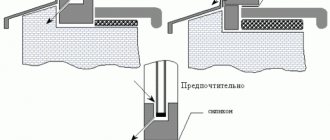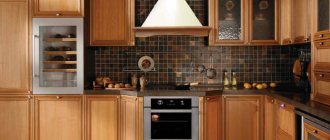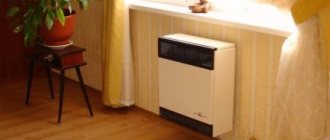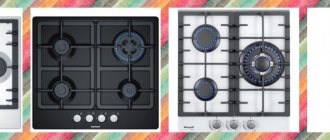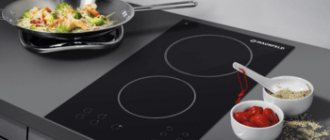When conventional radiators do not fully cope with the functions assigned to them or a different type of heating system is used in the premises, it is recommended to install heated windows to ensure comfortable conditions. Thanks to this solution, it is possible to minimize heat leakage and maintain optimal temperature conditions in the rooms at the lowest possible cost. There are several options for heating windows on the market, so you can always choose the most suitable one.
Design features of parapet convectors for window sills
All heaters of this type operate by natural convection.
Built-in heating elements warm the air, causing it to rise, replacing colder air masses. Thus, air exchange is formed and the room becomes warmer after a short time. Convectors installed in a window sill are quite simple devices, similar to products built into the floor. Their peculiarity is their small size, since the devices must fit freely into the dimensions of the window sill.
Characteristic features of heating devices:
- Compact metal boxes. They are hiddenly built into the window sill boards so that one decorative grille is visible from above;
- Application of heating elements made of non-ferrous metal. Heating elements are most often made of aluminum or copper, thereby ensuring a long service life;
- Tangential fans. Air exchange devices can be built into the body of the convectors, and the option of a separately installed electrical product is also possible. Both types of these fans are capable of intensive heat exchange in the room;
- Automatic thermoregulation. This system reliably maintains the set temperature in the room.
As a result, window sill convectors are functionally similar to their “brothers” built into the floor. Thermostatic sensors and stabilizers for fans are usually supplied with convectors, but can be sold separately.
In this case, they must be additionally “embedded” into the electrical circuit and installed outside the device body. This procedure, as well as embedding the product itself into a window sill, is labor-intensive, so it is recommended to purchase a convector complete with a window sill and automation.
After such a purchase, all you have to do is install the window sill with the device in place and connect it to the power supply. As a result, a small decorative grille will be visible on top of the window sill, through which heat will flow into the room.
Undoubtedly, they are effective in their essence:
Protects against penetration of cool air flow from the window;
Providing dry glass. The glass in the frames does not “sweat”, thereby promptly removing condensation from them, which is why they are always transparent and with good visibility;
- Safety during work;
- Sleek design;
- Saving useful space in the room.
Rice. 3. The convector will reliably protect the window from condensation and cold air
Thus, by installing a convector in a window sill, we get an additional, or even the main heating device. Operating built-in or mounted fans are almost inaudible at night, but the heated air creates coziness and convenience in the house.
When decorating their home, each person tries to find the most convenient and modern solutions for organizing a heating system, because it is this system that makes it possible to live comfortably in the created microclimate throughout the year.
There are many options for heating a room. Among the popular ones is the installation of radiators or specialized built-in convectors. In the first case, additional visible elements appear in the room, which heat the air efficiently and quickly. In the second, the room is maintained at the required temperature, but the heating elements themselves are hidden in niches behind a decorative grille - very convenient and aesthetically pleasing. The most famous are convectors built into the floor. But today we will talk about another option - convectors in the windowsill.
What does it consist of?
The main part is in the window sill block. The block is made of expanded polystyrene (high-rigidity, XPS or its cheaper variety, EPS), which can withstand loads well and create a decent level of tightness. The material is inexpensive, does not absorb moisture, and does not dissolve in it. Such blocks are compatible with windows made of any material: aluminum, wood, PVC, but the profile system must be taken into account.
Important! Expanded polystyrene is inert in a chemical sense, does not decompose, and is safe for human health. According to scientists, it retains these properties for at least 50 years.
Installation
Such equipment can be arranged in different ways:
- as a convector built into a window sill, which will create an excellent thermal curtain. It will effectively protect windows from freezing and fogging;
- being installed near the outer wall, it will not allow it to freeze too much;
- The installation option at the front door will create a barrier to cold air entering from the outside.
To secure the box to the base, adjustable corner brackets are used. It is fixed to the corners using screws. The box can thus be installed in any desired position. In the horizontal plane, the top of the tray with the grid is placed flush with the finishing coating.
The connection has a minimum of specific features.
For a water device, it is important to make connections in the tray, since troubleshooting any problems with the screed will be extremely difficult. For connection, two pipes are used: a supply pipe, on which a thermostatic valve is installed, and a return pipe with a shut-off valve.
To bleed air, use a Mayevsky valve.
If you are installing an electric convector, the main thing is not to make a mistake in choosing the cross-section of the copper wire. It is calculated using 1 square meter as a basis. mm cross-section for 8 A peak current. Fill the screed to the required height.
Note: The equipment can be installed in a wooden floor. In this case, the tray is placed between the joists and positioned so that the grate is flush with the finishing coating.
https://youtube.com/watch?v=AIEgi_eDjUM
2020 prestigpol.ru
About the manufacturers
The fairly widespread use of panoramic glazing in the construction of cottages, in retail, commercial and public places creates a demand for floor convectors. It is quite difficult to select just one manufacturer from the general list. Yes, this is probably not necessary, because... Thanks to the available variety, you can choose a device suitable for a specific situation.
So, if a narrow and low model is required, or if you want to use a convector instead of a window sill, and you also need to be able to use a heating control system, then Czech minib floor convectors will probably be the most suitable in such a situation.
But this is not the only manufacturer; similar products are made in Slovenia, Belgium, Germany, and Russia. Convectors built into the floor - they are produced in Germany or any other country, are usually of high quality, and each of the models offered by manufacturers has some peculiarity
For example, some convector variants have non-standard dimensions; analogue or digital controllers can be used for control; the design of the convector itself can make it easy to clean and tidy, etc. As another example of the variety of models, you can pay attention to convectors built into the floor, Breeze. This series of convectors is equally suitable for use in living rooms of apartments, sales areas, offices, etc. The models have a low noise level of built-in fans with sufficient power
The models have a low noise level of built-in fans with sufficient power.
Floor-mounted convector Breeze
So, buying a convector built into the floor will not pose any difficulties. However, it is worth keeping in mind that some nuances may arise when purchasing. If you consider floor-mounted convectors as a heating source, the price of such products is higher than that of conventional batteries. In addition, it depends on the scope of delivery, in particular, this concerns the choice of grille.
Benefits of the latest technology
Infrared film is used not only for heating window sills; it is used in systems of heated floors and baseboards. Installation of this device is simple, and no special tools or skills are required.
The heating film has the following qualities:
It heats up in a very short time: one or two minutes, and it is in the operating temperature range. It warms up efficiently, evenly, affecting the entire area. Electricity consumption is striking in its economy - 20 W. Three window sill plates - three 20 W each - the energy consumption is equal to one incandescent light bulb. Excellent aesthetic appearance. It does not damage the base at all, since it does not require either a cement screed or an adhesive solution for installation: it is applied to the surface using a dry method
This is very important: if it fails, there is no need to do “dirty” work. Replacement will require about an hour of free time. Sold in kits that include all the necessary accessories and elements for its installation: special tape, mounting wires, an insulating block, several clamps. To control such a heating system, a convenient electronic control has been created
There are both simple hand-held devices and programmable ones with an LCD display. Invisible to prying eyes. It is more convenient to measure thickness not in millimeters, but in microns.
Advantages and disadvantages of technology
Trench convectors have a lot of positive aspects:
- They do not take up space in the room, they are not visible like batteries under the window. Only the decorative grille is noticeable, which must be very durable due to the heavy operating load;
- Air heating occurs very quickly, since the heating surface is large;
- Energy saving. A small volume of coolant (hot water) is required;
- Ideal for panoramic windows and cases where doors are slightly open;
- They do not create additional load on the floor, foundation and overall structure of the building, as it is light in weight;
- The maximum grill temperature is 40 degrees Celsius. This means that in-floor heating convectors are safe for humans and animals; you cannot get burned on them.
Built-in water convectors also have disadvantages:
- Capricious to install. The slightest inaccuracies in installation lead to drafts and uneven distribution of air flow;
- It is necessary to constantly keep the radiator completely clean, otherwise the air flow will begin to transfer not only heat, but also dust;
- If the room has high ceilings, then installing fans inside the convector is impossible, otherwise all the heat will be concentrated under the ceiling.
Two ways to get rid of condensation on windows
So, in the process of moisture deposition on glass, two factors are involved:
- The difference in temperature between the glass surface and room air.
- Air humidity level in the room.
Thus, by influencing these parameters, you can “calm” the windows, as a result of which they will find a good mood and get rid of tearfulness.
- To ensure that moisture does not have time to linger on the glass, you can ensure active air circulation so that air currents capture and tear off droplets of moisture from the surface.
- You can get out of the situation by heating the glass. It is for this reason that heating radiators are prescribed to be placed under window openings. Heated air, rushing upward, washes the windows, creating the necessary ventilation, and at the same time warming them to a temperature above 13˚C. In this case, there is one caveat.
Each window has a sill that hangs over the radiator. The flow of hot air is forced to go around this obstacle. Therefore, it usually passes at some distance from the glass. And this, as you yourself understand, leads to insufficient ventilation and heating of the glass.
Usually, in order to avoid condensation, you have to heat the room more intensively. This leads to excessive fuel consumption, which can quite significantly hit your pocket.
The second method is to install special window sills. They hang over the radiator with a wide cornice. Hot air, resting against an obstacle, begins to look for a way out. There are channels inside the window sill through which the air flow is redirected to the window frame, where it can freely exit through the grille.
This is a fairly inexpensive method that is easy to implement. However, the channels tend to become clogged over time. Especially where housewives actively grow indoor plants.
Floor-wall convectors for water heating
Based on their location, convectors are divided into:
- In-floor.
- Floor-standing.
- In-wall.
- Wall-mounted.
- On the window sills.
Floor-standing devices are mounted under the window (equipped with legs), wall-mounted ones are installed in recesses and wall openings.
They can be with side and bottom connections.
Separately, we can mention window sill convectors. These are miniature heaters (from 11 cm deep, for installation in a window sill 2.5 cm thick) that can be built into any window sill and they will be practically invisible.
At the same time, the units are quite powerful (most often they have a built-in fan to increase the heat transfer rate). Such devices protect your home from drafts and cold air falling from the windows.
Example: The Eva parapet heater comes complete with an oak window sill and costs 28-40 thousand rubles.
There are floor-standing convector models made in the form of warm wooden benches.
Ventilation grilles for window sills and table tops
Ventilation grilles for window sills are the only way to establish natural air exchange in the room, to create a microclimate where the window sill, window corners and furniture standing next to the radiator will remain dry
This is especially important for the kitchen, where condensation accumulates in greater quantities than in other rooms.
In their properties, such grilles differ from conventional ventilation grilles in that they do not need to pass high-speed air flow. They should help maintain the microclimate in the room and prevent the formation of mold.
Our production company produces a variety of custom-made gratings for window sills
Sort by: Select Sort by: Title
Name
Price
Price
Reset
Grilles for window sills and table tops
Plastic windows in modern homes are very popular. They, of course, have many advantages over wooden ones, but at the same time they have one big problem - the formation of condensation and increased humidity in the room. Due to its tightness, air exchange is disrupted, the absence of which leads to the formation of mold and mildew.
The only thing that can be recommended for those who have plastic windows is decorative grilles for the windowsill.
The ventilation grille for the tabletop is different:
- The materials from which it will be made
- Shape
- To size
- Color palette
- Design Features
- Installation location
- Installation methods: external or internal
They can also be adjustable or unregulated. Using such a grid for the countertop will help you preserve not only the furniture, but also what is stored in the cabinets themselves
They fit beautifully into the modern interior of the room, do not attract attention and are easy to clean.
Bold design solutions for small rooms, studios and kitchens include combining countertops with a window sill. With this combination, the best option would be a set of grilles for the countertop, window sill and radiators.
In some projects, the window sill is generally replaced with a countertop and made into an extension of the kitchen table.
This frees up part of the room, which is very important for small spaces. Therefore, when replacing a window sill with a tabletop, it is very important to remember that you can block the free air circulation of the batteries in winter
This means your furniture will quickly become unusable. And here, a grid in the table top for the battery is the only way for you to maintain the integrity of your furniture.
This decorative ensemble solves several problems at once:
- Regulates the soft flow of warm air from the battery
- Hides central heating pipes or radiators behind the grille
- It beautifully decorates both the window sill itself, the table top, and the space under the window sill.
At your request, you can make such an ensemble in a modern style, select models that are easy to use and easy to install.
Do you still have questions and need professional help? You can order a call back, and our specialist will contact you and help you make your choice. Call or email
How to customize a kitchen to size
Calculate how much space all the standard modules you need will take up. The ideal option is if the length is equal to the size of the kitchen. Don't be discouraged if there is no room for additional modules like bottle holders, you don't need them. Practice shows that they are rarely used, and ordering them greatly increases the cost of the furniture set.
If the length of the kitchen set exceeds the size of the kitchen, one of the modules must be reduced or ordered in a smaller size. If not enough, order additional non-standard modules.
Here's the best solution.
- First module
: insert between the refrigerator and the wall. It distances the refrigerator from the wall and allows the refrigerator door to open freely. It also eliminates the unsightly “bag bag” - the space behind the refrigerator where we habitually stuff everything. - Second module
: insert for bottles. It is usually located next to the hob, since vegetable oil is mainly stored there. In addition, it will separate the hob from the next module with built-in appliances (for example, a washing machine), which is welcome according to the operating rules.
Rating of electric convectors for heating
Participants in specialized forums compiled a rating of electrical appliances taking into account the main parameters and operating features.
Electrolux ECH/AG-1500EF
A budget mobile model from a Swedish manufacturer, which attracts with its high efficiency and speed of reaching operating temperature.
A high-quality convector model from Electrolux allows you to reach operating temperature in just 80 seconds, effectively heating an average-sized room
The advantages also include a system of protective screens and the absence of air drying. The disadvantages of the device include its simple design and small heating area.
Timberk TEC PS1 LE 1500 IN
A convenient, high-quality device produced by a well-known international holding company, whose divisions are located in Europe and Asia.
The inexpensive mobile model on wheels has two heating modes (one of them is economical), high technical characteristics, as well as many additional functions:
- large area heating element;
- high-precision electronic thermostat;
- on/off timer;
- possibility of connecting accessories;
- air ionizer.
Disadvantages noticed by consumers include the inexpressive, according to some, design and sound effects (clicks) that are heard when the device is turned on and off.
Noirot Spot E-3 1000
The wall-mounted convector made in France has a nice design, an affordable price, high efficiency, and a wide range of settings.
The device has protection against overheating, a large memory capacity that allows you to restore settings in the event of a sudden power outage, as well as a special system that counteracts power surges in the network.
Among the weaknesses were the tight mode switch and the not too long cord.
Nobo C4F 20 XSC
Wall model from a Norwegian manufacturer. It has instant heating and is capable of heating large areas, which will please owners of large rooms.
The device has a nice design and has an overheat protection sensor, mechanical control of parameters with the ability to set the exact temperature, and ergonomic mounts that allow the device to be tilted.
The convector has almost no disadvantages except for the price, which is quite high.
Scoole SC HT HM1 1000W
The electric portable convector made in Norway has an attractive design. A small model at a budget price is a fairly powerful device that can instantly heat a medium-sized room.
The Scoole mobile model is distinguished not only by its bright color, but also by its good characteristics. The micathermic heating element guarantees sufficient power and high heating speed, and the mechanical thermostat has precise adjustment
Disadvantages include significant energy consumption, which increases operating costs.
Ballu ENZO BEC/EZMR 2000
The Russian-made model with a monolithic heater has an affordable price, but at the same time has high technical characteristics.
The convector, capable of quickly heating a room of 21-25 square meters, has an electronic thermostat, two heat transfer modes, one of which allows you to save electric current, and protection against overheating and tipping over.
There are also two mounting options (the kit includes fasteners for wall mounting and wheels for floor use), a backlit control unit and a temperature step of 1 degree.
Important advantages are also comfortable, uniform convection, the presence of a shutdown timer, and the ability to program modes.
Among the weaknesses, users note that the cord is not too long and the wheels are not strong enough.
Types of water convectors
Now we will talk about the most interesting thing - about the types of convector heaters on water. On sale are:
- floor-standing models - they are mounted on floors;
- wall-mounted models are the most popular and widespread type;
- baseboard models are an innovation in the modern heating market;
- in-floor – devices for hidden installation in floors;
- base models are devices for embedding into walls, niches and even stair steps.
Let's look at all types in more detail.
Floor convectors
Floor convectors are often used in rooms with panoramic windows. In this case, pipes for supplying hot coolant are laid on the floor. Installation of heaters comes down to securing them and connecting them to the heating system. Using the lowest and most compact models, you can achieve an ideal view from the window and high-quality heating of the premises.
Floor-standing water heating convectors are considered an ideal solution for cinemas, exhibition halls and other buildings with high floor-to-ceiling panoramic windows.
Wall convectors
Water-based wall-mounted convector heaters are characterized by minimal thickness and compactness. In size, they resemble electric convectors or conventional batteries. High models are installed under ordinary window sills, and miniature varieties of small height are suitable for windows with low window sills. Thanks to their design, they provide effective heating. In addition, they can be installed along blank walls.
Wall-mounted water convectors are used to heat premises for various purposes - these are ordinary living rooms, offices, industrial buildings, retail floors, warehouses and much more. They do not clutter up the space and provide soft and almost imperceptible circulation of heated air. For designer interiors, devices with decorative finishes are produced.
Skirting convectors
Baseboard heating convectors are a comparative innovation. They are miniature and designed for installation of baseboard heating. Their advantages:
- uniform heating of the air throughout the entire height of the room;
- extremely compact dimensions;
- high heating efficiency.
Despite their miniature size, underfloor heating devices warm up living spaces well, creating a comfortable atmosphere.
Trench convectors
In-floor water heating convectors will be a godsend for those who want to create the most hidden heating system possible. As their name suggests, they are recessed directly into the floors, where special niches are created for them. Pipes through which the coolant circulates are also laid there. One large-width in-floor water convector will provide high-quality heating and will not spoil the interior with its appearance - you can guess the presence of such a heater only by the masking grille in the floor.
Where are in-floor water convectors used? They are indispensable for installation in rooms with panoramic windows - unlike low floor-standing units, they do not even partially block the view from the windows. Being completely recessed into the floors, convector heaters do not interfere with the movement of people, so they can even be installed in doorways, creating a barrier to cold air flows.
In-floor heating convectors are indispensable in interiors that have high finishing requirements. These could be exhibition halls, concert halls, museums and other places where heaters protruding from the floors or their wall-mounted counterparts would be inappropriate. They are also used to heat private houses - the absence of visible elements of heating systems allows you to create interesting interiors.
Base convectors
Another novelty in the world of heating equipment is base-mounted water convectors. They are relatives of in-floor devices, as they are designed for hidden installation. Their installation is carried out in small niches, in walls, in stair steps, in partitions between rooms. Base convectors allow you to create an invisible heating system that is highly efficient. They will be an excellent choice for those who want to create an exclusive interior in which there will be no heating devices.
Basement heating convectors require connection to the electrical network. Electricity is needed here to rotate fans that create forced convection. To make them less noisy, manufacturers use low-noise fans. Thanks to this, they can work even at night without creating discomfort for household members.
Heated double-glazed windows
Recently, there has been an increase in demand for windows in which heated double-glazed windows are installed, capable of creating a thermal curtain directly in the air chamber itself. Their operating principle is based on heating a special coating, evenly distributed over the entire area of the glass, with the passage of electric current. A detailed review of these models has been published on OknaTrade. This modification will cost more than the two previous devices, but it is much more advanced and compact than heaters and more functional than flexible heating tapes. In Russia, heated double-glazed windows are recommended for installation in regions with harsh climates, as well as glazing of verandas, terraces, winter gardens and swimming pools.
Why is it necessary to insulate a window sill?
Rice.
2. Insulating the window sill will eliminate drafts. Most Russians believe that the issue of insulating the room can be solved by installing PVC windows. However, to effectively retain heat in a residential or office space, absolutely all elements of the window opening must be used. This is especially true for the window sill. It is this element of the window structure that is considered the most vulnerable. Therefore, if the temperature in the room drops, first of all, you should check the area where the window frame adjoins the window sill. If cold air comes from there, causing drafts, then residents need to urgently address the issue of insulating this particular window structure.
What it is?
For our climate zone, where cold weather lasts for six months and strong winds are frequent guests, the technology for making a warm window sill is quite in demand. They can be installed during the construction of new houses or during the renovation of old buildings.
Reasons for installing a warm window sill:
- The need for additional heating . This issue becomes relevant in the off-season for residents of city apartments, when central heating is turned off and weather conditions may change for the worse.
- Concern for house flowers . Owners of mini-greenhouses often complain about the death of flowers in winter. The reason is non-compliance with the temperature regime, and this does not always depend on the owner of the apartment. It is not always possible to move pots from the window to another place. In addition to the temperature range, plants must receive enough light.
- The appearance of condensation or ice crust on the windows. Windows begin to “cry” or ice appears on them in cases where there is high humidity in the rooms due to temperature changes. This problem occurs in residential apartments, offices, warehouses and other premises. For example, in restaurants and banquet halls, where comfortable conditions must be created for visitors. Wooden furniture reacts negatively to temperature changes and high humidity.
If you feel that there is a draft coming from the window opening, the glass becomes covered with condensation in autumn and spring, and frosty patterns in winter, it’s time to think about insulation. The insulation had clearly worn out, sagged and began to let in cold air.
Attention! It is easy to identify draft bridges. Light a candle or match and move it along the seams connecting the frame to the window sill. By the reaction of fire you will determine the presence of “bridges”.
Features of choosing a convector for a room
Built-in convectors in various capacities, sizes and configurations can warm up rooms of different sizes. The calculation must be carried out taking into account the characteristics specified by the manufacturer. But if we are talking specifically about the choice of embedding location, then it depends on several factors:
- Is the heating system with convectors the main one? Yes - it is better to give preference to large, powerful structures in the floor, no - you can completely get by with compact heaters inside the window sill, which will complement the main one.
- How large is the area of the room? The large ones are definitely in-floor, the small ones are built into the window sill.
- Is it possible to install convectors in a specific location? The answer is logical, if it is not possible on the floor, then on the window sill and vice versa.
The comfort of being in the room depends on a high-quality and correctly selected heating device. Moreover, it is necessary to take into account not only functional indicators, but also aesthetic perception. In the second, built-in convectors definitely have no equal!
Built-in convectors are modified conventional heating radiators. They appeared almost simultaneously with the fashion for panoramic windows and balconies. Such apartments need to be heated, but standard radiators spoil the appearance, which is why built-in heating devices appeared. They are usually installed in the floor, as well as in the window sill, low or high. When installed correctly, such radiators successfully heat a room without being noticeable and do not spoil the interior of the surrounding space.
What height should be for installing batteries?
A high-quality heating system is a mandatory factor to ensure a comfortable life for people in an apartment building. In order for energy efficiency to be at a high level, it is necessary to comply with the requirements for the installation and placement of radiators. There are established standards for the location of heating devices, following which you can ensure optimal temperature in the house and reduce heating costs. Before starting installation, you need to know how far the window sill should protrude above the battery, at what distance from the battery to the wall and floor to install the heating circuit, and which circuit is best to choose.
Types of convectors depending on heating elements
Convectors for installing a heating system in premises, depending on the energy source used, are divided into several types:
electric. Devices of this type are very convenient and effective. They work from the mains. To install them, you do not need to install a complex pipe system. Electrical appliances are equipped with closed-type heating elements - heating elements. Additional plates are installed on them to increase the heat transfer area. Heating elements are made of aluminum, steel and copper. The durability of the entire system and its efficiency depend on the quality of the heating elements;
aquatic. The working element of the system is hollow tubes, which are equipped with welded or pressed plates. A certain coolant circulates inside - water, antifreeze, and others. The type of liquid depends on the model of the device. Connection to the existing heating system is made through threaded pipes. Coolant circulation is most often forced. The system layout is one- or two-pipe. Pipes are made of copper, aluminum, regular and galvanized steel. The first option is characterized by the highest cost. To reduce the price, a combination of copper and aluminum is often used. The cheapest models are made of galvanized steel;
gas. Devices of this type are characterized by efficiency due to the low price of energy. A significant disadvantage of using such units in residential buildings is the high risk of gas explosion
But if all precautions are taken, these devices show their best side.
